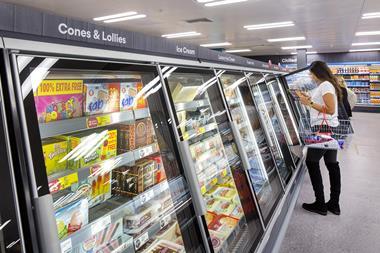
In today’s fast-paced world, poor diets have become a leading cause of death and disease globally. This alarming trend is driven by the consumption of heavily marketed, ultra-processed foods and drinks high in fat, salt, and sugar. These energy-dense products lack essential nutrients and contribute to soaring levels of ill health from childhood through to old age.
The excessive sugar content in these products is particularly concerning, driving consumption levels far beyond recommended limits. Over the past decade, the UK has taken proactive steps to address this issue through various policies.
Among these initiatives, the soft drinks industry levy and the sugar reduction programme stand out. These policies aimed to tackle sugar intake from different angles, with varying degrees of success.
The mandatory soft drinks levy proved to be a formidable tool, achieving a remarkable 34.3% reduction in total sugar content between 2015 and 2020. In contrast, the voluntary sugar reduction programme fell short, managing only a modest 3.5% reduction despite a target of 20%. This discrepancy emphasises the importance of robust policy design and implementation processes in influencing outcomes.
The soft drinks industry levy imposes a tax on soft drinks based on their sugar content, incentivising manufacturers to reduce the sugar levels in their products. The results have been impressive, with a significant reduction in sugar consumption from soft drinks, demonstrating the effectiveness of fiscal policies in driving public health improvements.
However, despite large reductions in sugar content, the volume sales of soft drinks increased by 21.3% from 2015 to 2020, likely driven by a large marketing campaign.
Conversely, the voluntary sugar reduction programme, which targets a broader range of products, has not seen the same level of success. This programme relied on voluntary commitments from food companies to reduce sugar levels in their products, by reformulation, portion size reductions and shifting sales to healthier alternatives.
Encouraging reductions were seen in some categories. But there were large differences between what the various companies achieved, with an average of 18 percentage points between the best and worst performers in each product category.
Given the three available methods to achieve the 20% reduction target, companies had the flexibility to easily overcome technical challenges to meet this goal. For instance, if it was difficult to reformulate a product, then shifting sales to lower sugar alternatives should have been used. Instead, the data suggests some companies may have tried to do the opposite.
Read more:
-
WHO backs call for extension of sugar tax to cakes, biscuits and chocolate
-
National Food Strategy is an-off-the shelf solution for Labour
The next government has immense potential to build on the impact of these policies. One strategy involves increasing the soft drinks levy and adjusting the sugar content threshold to further incentivise reformulation within the industry. Furthermore, it could be extended to include milk-based and juice-based drinks, and nutrition labelling should state the amount of non-sugar sweeteners used by companies in products.
Additionally, setting more stringent, subcategory-specific targets within the sugar reduction programme can drive meaningful change. Similar to the first 15 years of the successful salt reduction programme, targeted and enforceable goals for sugar reduction could lead to more substantial health benefits.
Baby and toddler foods should have their own stricter mandatory targets. This would require robust monitoring and enforcement mechanisms to ensure compliance and measure progress effectively.
Furthermore, policymakers should explore extending similar levies to other discretionary products that contribute significantly to sugar intake. Products such as confectionery, cakes, and biscuits are major sources of added sugars in many diets and performed poorly in the sugar reduction programme. Implementing levies on these products could reduce sugar consumption and promote healthier alternatives.
The UK’s experiences with sugar reduction policies offer valuable insights for shaping future initiatives. The success of the soft drinks levy demonstrates the effectiveness of fiscal measures, while the challenges faced by the voluntary sugar reduction programme highlight the need for stronger regulatory frameworks. By continuing to innovate and adapt our policies, we can create a healthier future for all.



















No comments yet